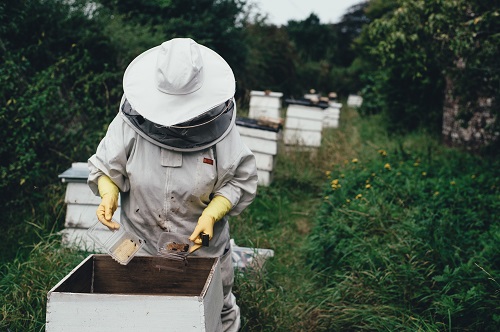New Hives Could Help Save Honey Bees
September 09, 2019
Over the last decade, the Varroa mite has been decimating honey bee hives. Many believe more than anything else, this parasite is responsible for the colony collapse disorder. This past winter has put more stress on honey bee populations, with beekeepers reporting record losses after the winter, with some businesses being completely wiped out.
Could WE Be Unknowingly Killing Our Honey Bees?
This is a question we really need to take a good look at after reading a report by Derek Mitchell, a Ph.D. candidate at the University of Leeds.
We have to look at how kept hives are performing against wild hives. Throughout the world, reports point to manmade hives being hit harder by Varroa mites. The same can be said after the winter, as more bees are reportedly lost in manmade hives than they are in wild hives. Mitchell believes he has figured out why this is happening.
According to his report, there are two very important factors contributing to the death of these bees that are directly related to the construction of the manmade hives. For one, manmade hives are not able to hold heat as well as natural hives. This very much helps explain the enormous losses beekeepers experience every winter and especially this past winter. Second, manmade hives are less humid than natural hives, which creates a more favorable living condition for the Varroa mite. The solution… build new hives.
Still Going Old School
Most beekeepers are using hive designs that are more than 150 years old. The designs were first constructed in the 1930s, but those designs were created using ideas from as far back as 1850. While our knowledge of the honey bee has improved, the designs have not.
Natural hives are very tall and very narrow, typically about 150cm high and 20cm wide. They also have very thick walls, relatively speaking (15cm), as well as very small entrances (7cm²). Manmade hives are the complete opposite. Most hives are about 45cm high, using very thin wood (2cm), and usually have a very large opening (60cm²). The manmade design was created out of convenience for the beekeeper, not the bee. It was done so the honey could be retrieved easier rather than creating a natural-like home for the honey bee.
Using all relevant factors, Mitchell found the manmade hives had a heat loss factor of seven times that of natural hives. Additionally, the larger openings significantly lowered the humidity level in the manmade hive.
The hive design does not have to be radically changed, but it does need to be changed. For instance, rather than using wood, polystyrene can be used. Additionally, the walls need to be much thicker and the openings of the hive need to be much smaller. Even though the shape will still be quite different, these subtle changes could make a world of difference to the honey bee.
Source: The Conversation, Photo by Annie Spratt on Unsplash


.jpg)




